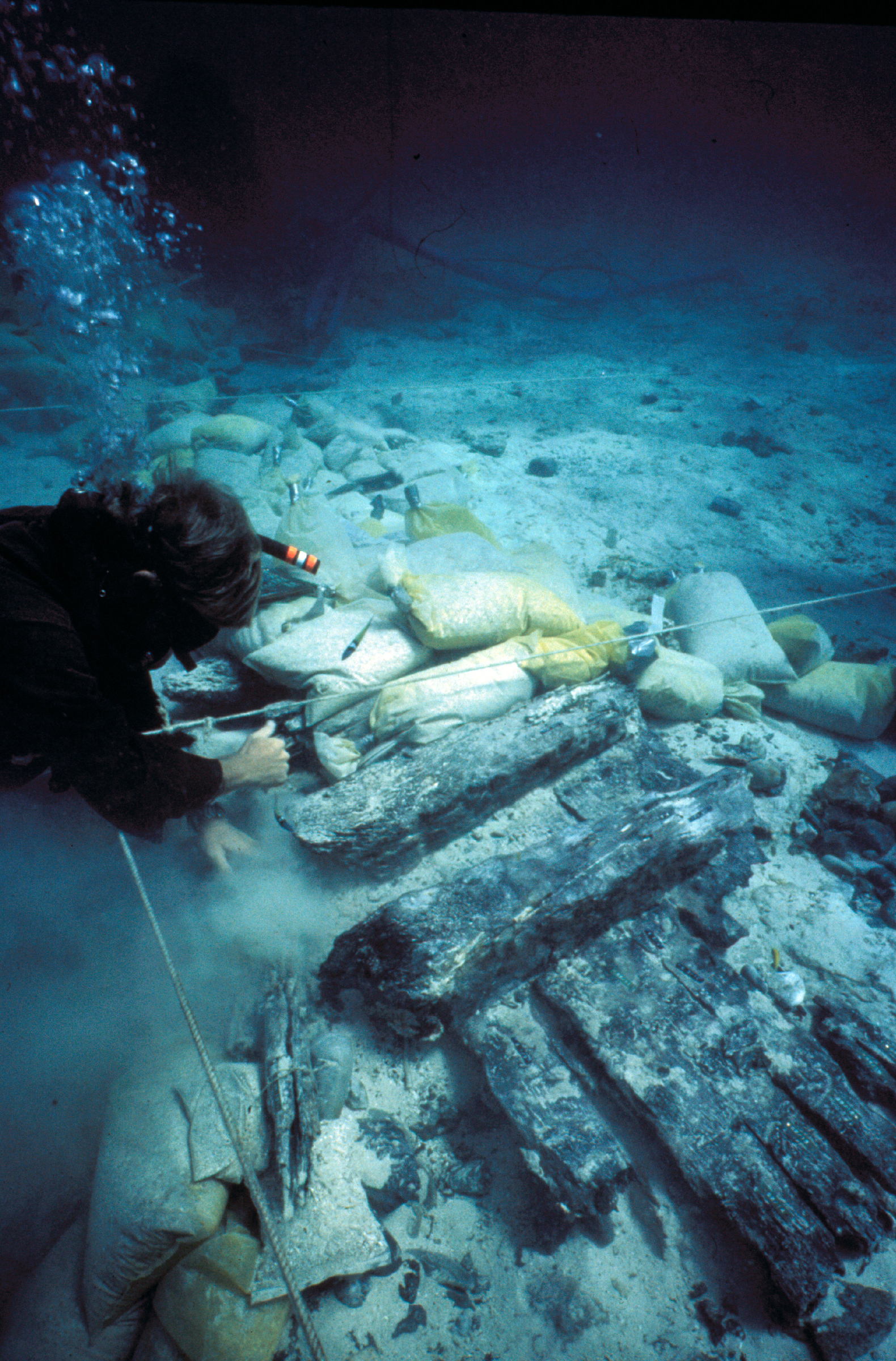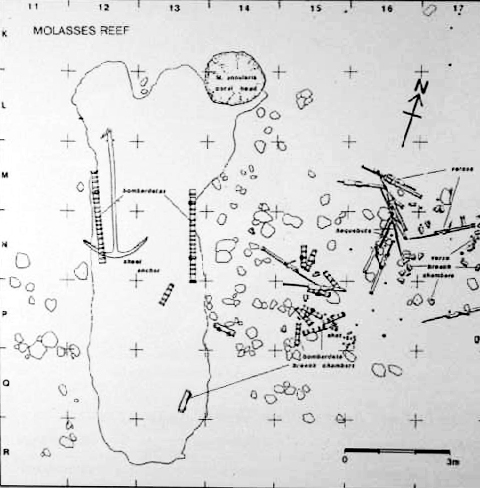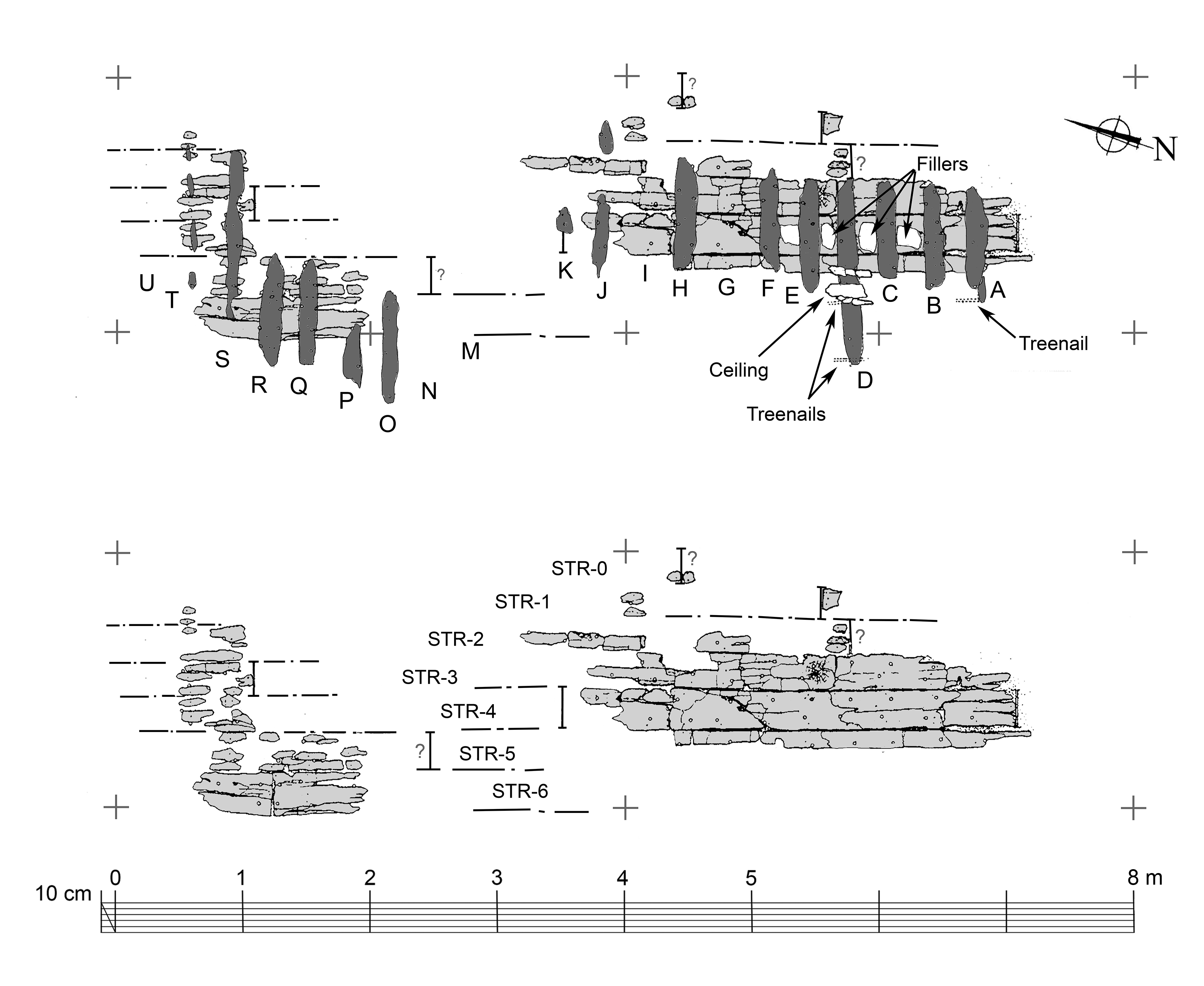Molasses Reef Shipwreck (c. 1520)
Filipe Castro
History of the wreck
The identity of this ship is unknown. It may have been built in Portugal, since most of its ballast comes from Lisbon (Lamb 1990). It is believed to have wrecked in the late 15th or early 16th century, probably during a voyage of capture of Bahamian natives for slave work in the mines of Hispaniola.

The Molasses Reef wreck was found in the early 1970s by sports divers in the southern perimeter of the Caicos Bank, Turks and Caicos Islands, in the Caribbean.
Salvaged by treasure hunters – among whom the famous Teddy Tucker – at least since 1972, this wreck was exploded by vandals just before the Institute of Nautical Archaeology started archaeological excavations on the site, through its Exploration and Discovery Research Team (EDRT).
These INA excavations lasted between 1982 and 1986, under the direction of Donald H. Keith (1989).
In the 1980s the INA dedicated time, money, and energy to the understanding of the ships that allowed the discovery, exploration and invasion of the American continent. A decade before the commemoration of the 5000 years of Columbus discovery of the Americas, INA created and funded a research team to find, excavate, study, and publish shipwrecks from European explorers. The results of this decade of research far exceeded the expectations, setting the base for the study of the Iberian shipbuilding and the European navigation into the New World (Bass 1988).
This effort had yet another outcome. The work of the INA and Texas A&M University in the New World triggered an intellectual discussion with the treasure hunting community and set the tone for the discussions that led Texas to outlaw the destruction of shipwrecks in its territorial waters by treasure hunters, and eventually led to the Abandoned Shipwrecks Act of 1988.
Description of the site

As it was found by the INA team, this wreck consisted of a ballast pile extending to an area of 11.5 x 3 m, and around 60 cm high. Its weight was estimated around 36 tons.
the site had been dynamited by treasure hunters and looted for about a decade.
Under the ballast pile, however, was a preserved wooden structure, consisting of floors, futtocks, planking and ceiling, covering an area of 2.5 x 7.5 m which represented less than 2% of the hull, from a part of the bottom located between the keel and the turn of the bilge (Keith 1987). It’s study would reveal precious clues for our understanding of the Iberian shipbuilding tradition of the early modern period.
Hull Remains
As mentioned above, the hull remains were a small portion of the hull, but they provided information on the early modern Iberian shipbuilding tradition.

Keel
No keel, stem or stern posts are preserved although we know, from a preserved gudgeon, that the sternpost – and presumably the keel and stem post – had a sided dimension of 20 cm.
Frames
Twenty-four frames or frame positions were found in place. The floors were around 16cm sided. The futtocks were in average 16cm sided and 16-17cm molded. Room-and-space was 32.5cm. The floors overlapped the futtocks along 75cm, and presented dovetail joints, the mortise on the futtock and the wider side of the trapezoid up, at least in the preserved joints. Fillers were found in place, covering the tops of the floor timbers. The (only) midship frame had a pair of futtocks on each side. At least 11 frames were pre-assembled.
Planking
Six rows of planking were preserved in place, presenting a thickness of 4.5 cm and widths between 28 and 35 cm. All preserved planks were plain sawn, and all were butt joint, forming regular strakes.
Ceiling, thick stuff and wales
Although ceiling planks have survived in very poor condition, their dimensions have been estimated as 2cm thick and around 14cm wide in average. Five filler pieces were found in place.
Fasteners
A great variety of fasteners were found in the concretions around the site. These were divided into oak treenails, iron bolts, drift pins, and nails. Treenails had diameters of 2.8cm. Bolts were 2.7-3cm in diameter with domed heads, 1.4-3.8cm in diameter with flat heads, and 1.2-2.8cm in diameter unheaded. Their lengths varied between 30 and 50cm. Drift pins had square shanks 1.2-2.8cm and lengths of 35-45cm. Nails were button-headed with shanks 0.1-2cm in square, or flat-headed with square shanks 0.2-1.8cm. Their lengths varied between 6 and 14.5cm.
The floors were fastened to the first futtocks with two treenails and two nails, driven from opposite sides. The planks were fastened to the frames with two nails and two treenails, typically the nails on the axis of the frame, near the seam, and the treenails on each side of the centerline. At some locations there were additional fastenings with round-shafted nails of 1.3cm diameter. The ends of the planks were secured with three nails and two treenails. Nail heads were recessed in counter-sink holes.
Caulking
According to Dr. Keith (1987), “thin strips of lead had been forced between the strakes places” and “lead sheet patches of different shapes and sizes were found on the site”. Caulking was found wrapped around the nail heads.
Ballast
Around 36 tons of ballast were found on site, mostly originating in Lisbon, some smaller quantities from southern Spain, England and the Canary Islands (Lamb et al. 1990).
Size, scantlings and wood
Estimated 20 m on the deck and 7.5 m beam. Its most important timbers had the following dimensions:
| Sided (cm) | Molded (cm) | |
| Keel | unknown | unknown |
| Floors | 16 | 16-17 |
| Futtocks | 16 | 16-17 |
| Room-and-space | 32.5 | – |
| Planking | 30 | 4.5 |
| Ceiling | 14 | 2 |
Wood
All timbers analyzed showed to be of oak (Quercus sp.).
Bibliography
Bass, George F., 1988. Ships and Shipwrecks of the Americas: a history based on underwater archaeology. New York, N.Y. : Thames and Hudson.
Keith, Donald Hart The Molasses Reef Wreck, Texas A&M Ph.D. Dissertation, College Station, 1987.
Keith, Donald H. “The Molasses Reef Wrecks Project” INA Newsletter (1989) 16.3: 4-9.
Keith, D.H., Duff, J.A., James, S.R., Oertling, T.J. & Simmons, J.J. “The Molasses Reef wreck, Turks and Caicos Islands, B.W.I.: A preliminary report” IJNA (1984) 13.1: 45-63.
Keith, D.H. & Simmons, J.J. “An analysis of hull remains, ballast and artifact distribution of a sixteenth century shipwreck: Toward a better understanding of wrecking and reconstruction” JFA (1985) 12.4: 411-424.
Lamb, William R., Keith, Donald H., Judy, Susan A. “Analysis of the ballast of the Molasses Reef wreck” National Geographic Research (1990) 6.3: 291-305.
Oertling, Thomas J. “The Molasses Reef Wreck Hull Analysis: Final Report” IJNA (1989) 18.3: 229-243.
